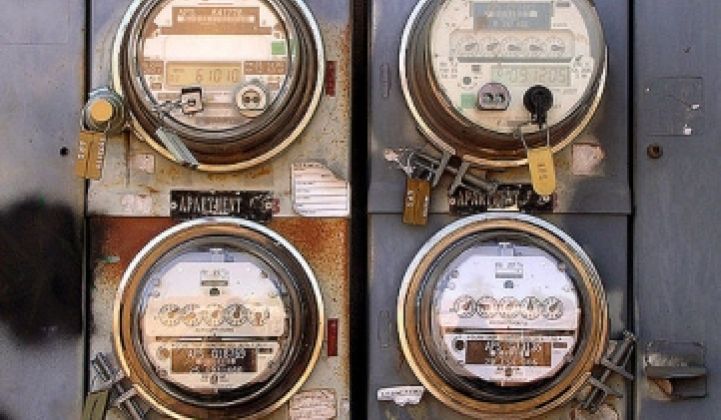Lawmakers and utilities have talked a lot about how much they love energy efficiency measures – technologies and programs to encourage consumers to conserve, particularly during peak hours. But deploying them has been slow-moving.
Consider this: Savings from energy efficiency initiatives represent about 1 percent of the country's sales of electricity, said Lisa Wood, executive director of the Institute for Electric Efficiency.
Ralph Cavanagh, co-director of the energy program at the Natural Resources Defense Council, said consumers have a long way to go to conserve energy.
"We were saving one third of 1 percent of electricity in the country in 2008," Cavanagh said.
Wood and Cavanagh joined Jim Rogers, CEO of Duke Energy, and Debra Reed, CEO of San Diego Gas & Electric, in trumpeting the benefits of energy efficiency programs at the annual meeting of the Edison Electric Institute in San Francisco on Wednesday. The institute represents investor-owned utilities.
Many utilities love the idea of energy efficiency because it's cheaper than, say, buying solar power. If residential and business customers dial down on their electricity use, then they are saving energy, which need to be produced by building more power plants. But keep in mind that achieving energy efficiently means cutting wasteful use and achieving the same or similar results with less energy (use CFL bulb instead of the good old incandescent one). It isn't about cutting power generation and use by absolute terms because as the population grows, so will the overall demand for electricity.
Energy saved or "produced" from energy efficient measures would cost 3.5 cents per kilowatt hour, Wood said.
California's efforts make up a third of the investments and savings in the nation, Wood said. The state has made it a policy to separate the revenues the investor-owned utilities can make from the amount of energy they sell, and it provides incentives for carrying out conservation initiatives.
As a result, California utilities have been rolling out programs to encourage conservation and installing smart meters and software that allow them to gauge their customers' energy consumption and detect problems with the grid (see Utilities Brief California Energy Commission on Smart Grid Efforts).
"In the future, we see the new game will be more on the customer side of the meters," said Reed, who cited the San Diego's recent partnership with Google to make home energy management software available to customers (see Google Names Itron, Utilities as PowerMeter Partners). "Energy efficiency reduces your need and demand before you look at the supply."
Reed warned that utilities need to come up with new business models to make money as more public money and policies celebrate energy conservations. She noted that California's energy policy is moving toward making net-zero energy homes possible – homes that generate power through the use of solar hot water heaters and solar electricity from rooftop panels.
"Utilities can become energy banks with deposits for homes and businesses," Reed said. "If you look at our industry, we haven't changed a whole lot. But we are on a cusp of a huge change."
Making energy efficiency a central goal for utilities across the country will require a lot of policy work, Rogers said. Only 12 states embrace the de-coupling concept, so many utilities still find more incentives to build power plants and encourage energy use, Wood said (see list).
For states that do promote energy efficiency programs, utilities and regulators often bicker over how to determine the performance and success of energy efficiency programs and reward utilities accordingly, Rogers added. Duke recently announced several efforts to deploy smart meter and energy management technologies (see Duke Energy Enlists Cisco in Smart Grid Effort and Sequentric Working on Duke Pilot Project).
"It's got to be performance based and verified by a third party," Rogers said. "We've got to be able to make those investments beyond the meters.
Image via this lucid moment.



